Disclosure: This article contains affiliate links. We may earn a commission from purchases at no extra cost to you, which helps our travel content.
The first time I saw Lhasa unfold before me from the window of a rattling bus climbing up from the Gonggar Airport, I felt like I'd slipped into another dimension. The Potala Palace rising above the city like something from a dream, prayer flags dancing in the thin mountain air, and that impossible Tibetan blue sky stretching forever. Getting to the rooftop of the world isn't straightforward, y'all – but that's exactly what makes the journey worthwhile. After three visits documenting cultural archives and exploring the region's sacred lakes, I've learned a thing or two about navigating this remarkable place.
The Permit Puzzle: Your First Transportation Challenge
Let's get this straight from the jump – you can't just book a ticket to Tibet and roll up whenever you please. The Chinese government requires every foreign traveler to have a Tibet Travel Permit, and you can only get one through a licensed Tibetan tour agency who'll arrange your itinerary. This isn't just bureaucratic red tape; it's your literal ticket to ride.
I learned this lesson the hard way my first attempt, getting stuck in Chengdu for three extra days while my paperwork processed. These days, I start planning at least 3-4 weeks ahead with a reputable agency like Tibet Vista, who handle the permit headache while you dream about butter tea and mountain passes.
Your permit will determine not just your entry but your entire transportation journey – which cities you'll transit through, whether you're flying or taking the train, and even which sites you can visit once you're in Lhasa. It's all connected, and the system doesn't flex for spontaneity.
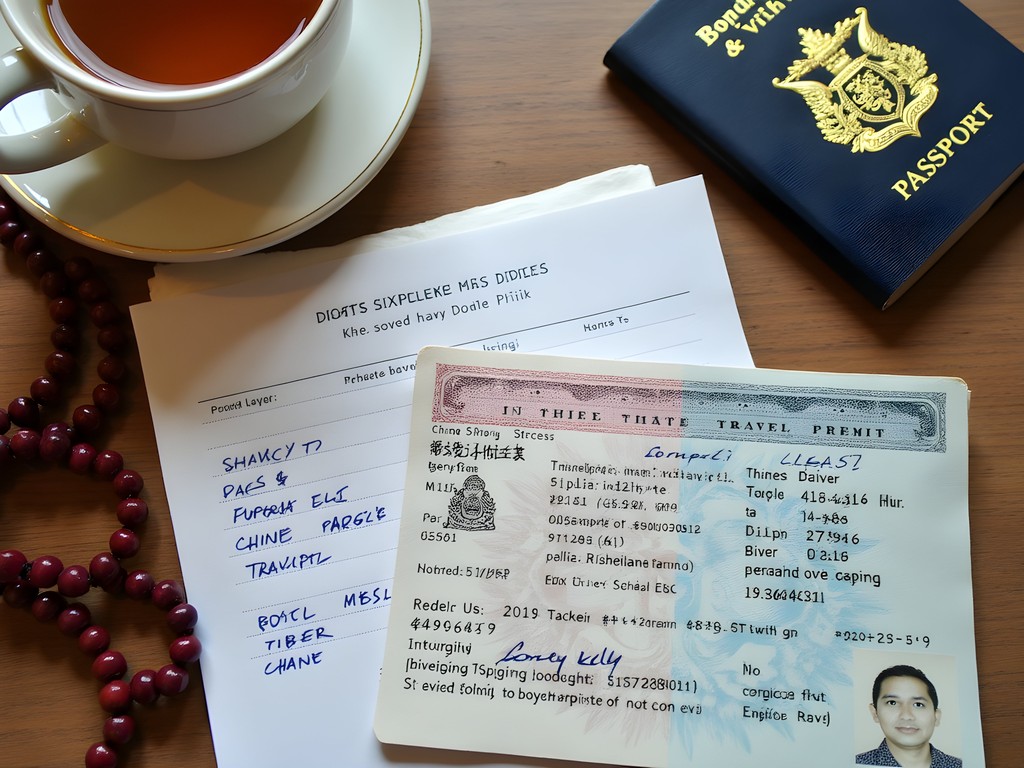
💡 Pro Tips
- Apply for your Tibet Travel Permit at least one month before your planned trip
- Keep digital AND physical copies of all permits and travel documents
- Choose an established Tibetan tour agency with English-speaking guides
Sky Road vs. Iron Dragon: Flying or Training to Lhasa
You've got two main options for reaching Lhasa: flying direct or taking the legendary Qinghai-Tibet Railway. Each offers dramatically different experiences and acclimatization benefits.
The Sky Road (Flying)
Flying into Lhasa's Gonggar Airport gets you there quick – about 2 hours from Chengdu or 4 from Beijing – but hits your body with the full altitude shock. At nearly 12,000 feet, Lhasa will humble you with headaches, dizziness, and that peculiar breathlessness that feels like you've forgotten how to inhale properly.
If you're tight on time, flying makes sense, but do yourself a favor and pick up some altitude sickness medication before your trip. I've found starting the medication 24 hours before landing helps take the edge off that first brutal day.
The Iron Dragon (Train)
Now, for the true experience – the 'Sky Train' climbing the Tibetan plateau is something that'll stick with you forever. The 40+ hour journey from Beijing (or shorter options from Chengdu, Xi'an, or Shanghai) gives your body time to adjust gradually as you climb through some of the most spectacular scenery on earth.
I'll never forget waking up on that second morning as we crossed the permafrost of Tanggula Pass – the highest railway in the world at over 16,000 feet – watching wild yaks grazing while oxygen pumped through the carriages. My travel journal is filled with sketches from those train windows that later became prints in my 'Passages to Lhasa' series.
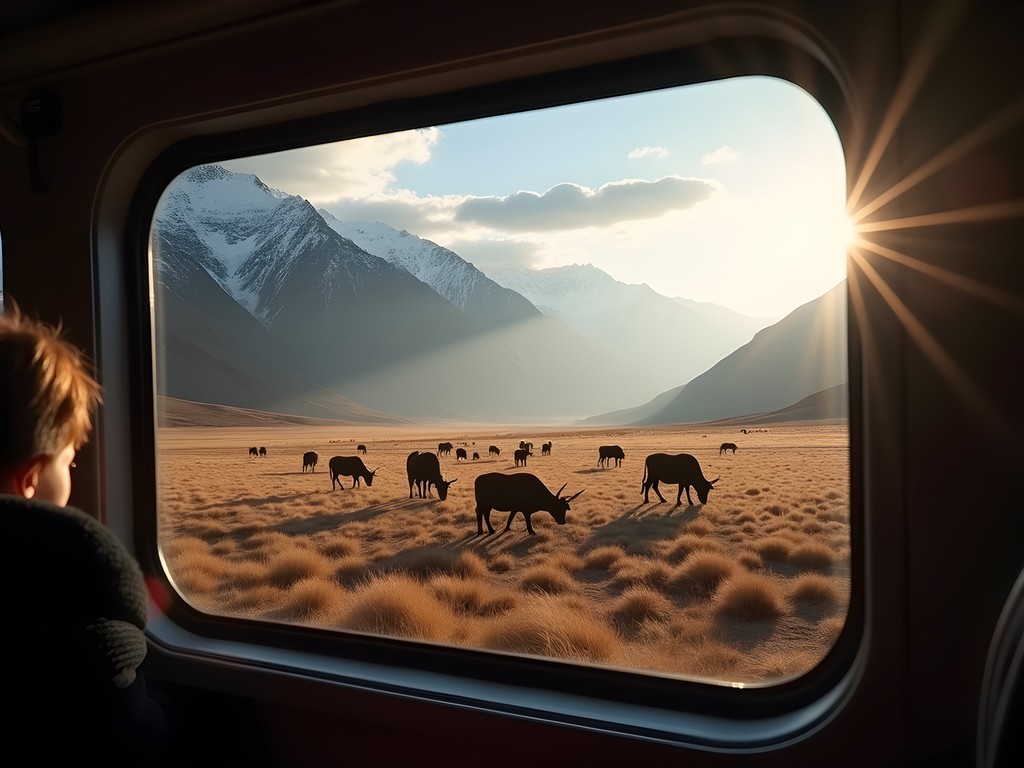
💡 Pro Tips
- Book soft sleeper class on the train for multi-day journeys – hard sleepers are rough for Westerners
- The train has limited food options – bring plenty of snacks and instant noodles
- Window seats on the left side (facing forward) offer the best views on the approach to Lhasa
Altitude Acclimation: The Transportation Strategy Most Guides Skip
Here's something they don't tell you in the glossy brochures – your transportation choices should be directly tied to your altitude strategy. The biggest mistake I see folks make is landing in Lhasa and immediately trying to do everything at once.
After that first disastrous visit where I spent two days in my guesthouse with splitting headaches, I've developed a rhythm that works: arrive, then do absolutely nothing for 24 hours. I mean it. Drink water, rest, maybe take a slow 10-minute walk, then rest some more.
If you're flying in, consider this transportation hack: ask your tour operator to arrange a stop in Tsedang (at a lower 11,450 feet) or Gyantse before heading to Lhasa. These intermediate stops give your body crucial adaptation time.
For equipment, I swear by my pulse oximeter to monitor my blood oxygen levels those first few days. When the reading drops below 85%, I know it's time to slow down and breathe deliberately. My Tibetan guide Tenzin taught me to carry a small bag of dried goji berries – a traditional remedy that seems to help with the headaches, though the science is still out on that one.
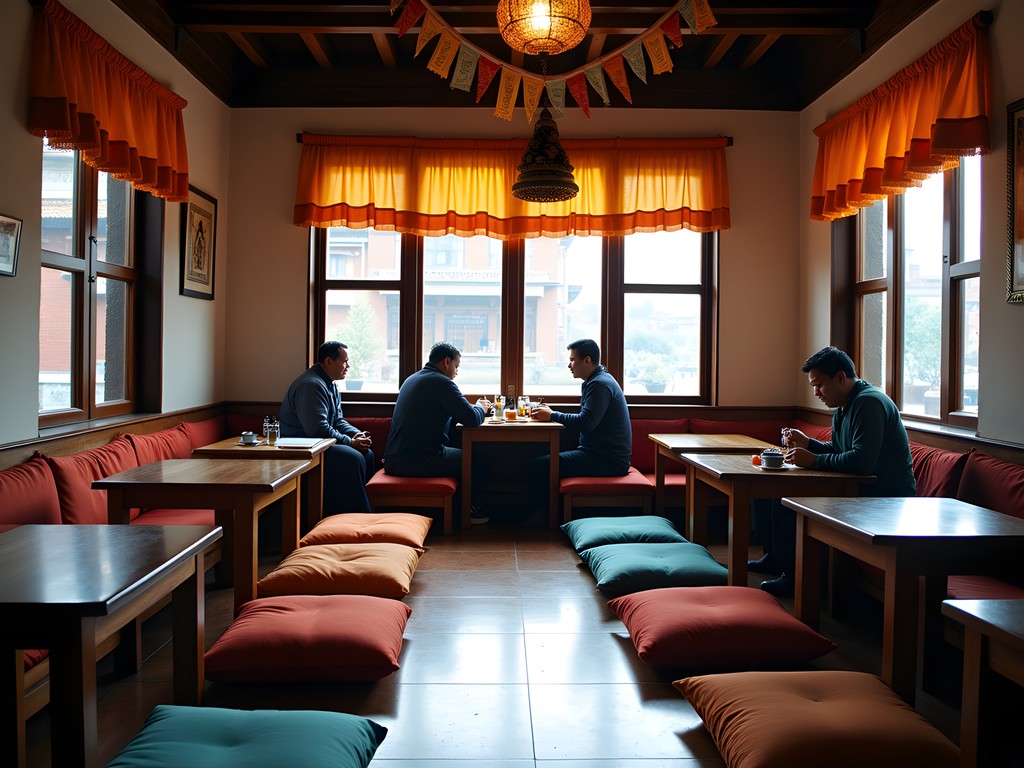
💡 Pro Tips
- Schedule nothing important for your first full day in Lhasa
- Drink at least 3-4 liters of water daily to combat altitude effects
- Avoid alcohol completely for the first 48 hours after arrival
Getting Around Lhasa: Local Transportation Deep Dive
Once you've conquered the journey to Lhasa and your lungs have made peace with the altitude, you'll need to navigate the city itself. Lhasa is more compact than you might expect, with most major sites concentrated in a walkable area – though that 'walkable' designation comes with an asterisk when every step requires more oxygen than your body wants to provide.
Walking the Kora
The most authentic way to experience Lhasa is on foot, especially around the Barkhor Circuit – the traditional kora (pilgrimage path) that surrounds the Jokhang Temple. Join the flow of Tibetan pilgrims making their clockwise rotations, some prostrating every few steps. The thin air makes even gentle slopes challenging, so pace yourself and carry water.
Public Buses
Lhasa's public bus system is surprisingly functional and dirt cheap (1-2 yuan per ride), though signage is primarily in Chinese and Tibetan. Buses 1 and 2 cover most tourist areas. I've found that saving a screenshot of bus routes on my phone helps navigate when language barriers arise.
Taxis & Rideshares
Taxis are abundant and affordable, starting at 10 yuan for short trips. Always confirm the price before getting in, as meters are theoretical concepts rather than actual practice. For longer excursions to places like Drepung Monastery, negotiate a waiting fee with the driver.
My secret weapon for getting around is the translator device that allows me to speak English and have it translated to Mandarin or Tibetan. The looks on drivers' faces when my little machine starts speaking their language is worth the investment alone.
Bicycle Rentals
For the brave and well-acclimated, bicycle rentals offer an exhilarating way to explore. After my third day, I rented a mountain bike to explore the city's edges and reach the stunning Drepung Monastery. Just remember that the altitude makes even gentle pedaling feel like an Olympic effort.
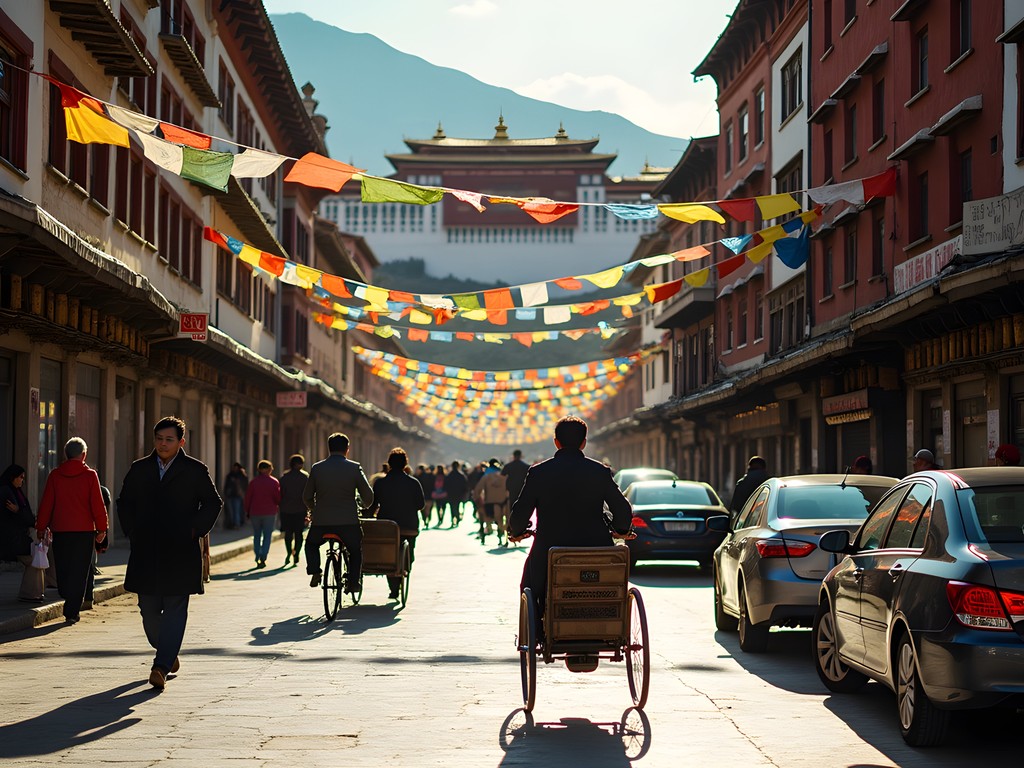
💡 Pro Tips
- Download maps offline before arrival – Google Maps doesn't work well in Tibet
- Learn basic directional phrases in Tibetan – locals appreciate the effort
- For destinations outside the city center, hire a driver through your hotel for the best rates
Beyond Lhasa: Day Trips and Excursions
The true magic of Tibet often lies outside Lhasa's city limits, where ancient monasteries perch on impossible cliffs and turquoise lakes reflect snow-capped peaks. Your transportation options expand here, but so do the complications.
Lake Namtso: The Jewel of Tibet
My research into sacred lakes led me to Namtso, about 4-5 hours from Lhasa by private vehicle. This high-altitude lake (15,479 feet) requires both proper acclimatization and careful planning. Most visitors go as part of an overnight tour, as the road crosses a 17,000-foot pass that can close without warning due to weather.
The lake's otherworldly blue against the stark mountain backdrop was worth every bump in the road. I captured some of my favorite photographs using my polarizing filter to cut glare and enhance those impossible blues.
Ganden and Samye Monasteries
For shorter excursions, the monasteries of Ganden (1.5 hours from Lhasa) and Samye (4 hours) offer profound cultural experiences. Most hotels can arrange shared minivans to these sites, though having your own vehicle provides flexibility for photography stops.
At Ganden, I spent hours documenting the monastery's collection of ancient texts – a privilege arranged through university connections that became the centerpiece of my 'Sacred Archives' exhibition back in New Orleans.
Transportation Reality Check
Remember that all travel outside Lhasa requires additional permits arranged by your tour company. Improvised road trips aren't a thing in Tibet – every movement is documented and approved in advance. This can feel restrictive to independent travelers, but it also creates a structure that helps prevent altitude-related emergencies in remote areas.

💡 Pro Tips
- Book day trips at least 2-3 days in advance through your hotel or tour operator
- Bring twice as much water as you think you'll need for excursions outside the city
- Always carry your original passport and permit for checkpoints on roads outside Lhasa
Final Thoughts
Reaching Lhasa isn't just another stamp in your passport – it's a pilgrimage that demands patience, preparation, and respect for both physical limitations and cultural complexities. The transportation challenges are real: the permits, the altitude, the restricted movement. But these very obstacles are what keep Tibet feeling like one of the last truly profound journeys left on our increasingly accessible planet.
After three visits, I still feel my heart race when that first glimpse of the Potala Palace comes into view from the train window or airport road. The bureaucratic hoops and oxygen-starved first days fade away, replaced by the understanding that some places should require effort to reach.
When you go – and I hope you will – move slowly. Let the rhythm of Lhasa's ancient streets set your pace. The thin air forces a kind of mindfulness that we rarely practice in our daily lives, a deliberate consideration of each step and breath. In our rush to document and share experiences, this might be Tibet's greatest gift: the enforced presence that comes when simply breathing requires attention.
✨ Key Takeaways
- Start the permit process at least one month before your planned travel date
- Consider the train journey for better altitude acclimation despite the longer travel time
- Plan nothing important for your first 24 hours in Lhasa
- All transportation outside Lhasa requires additional permits and advance planning
- Respect the pace that the altitude demands – this isn't a destination for rushed itineraries
📋 Practical Information
Best Time to Visit
May-October, with July-August being warmest but rainiest
Budget Estimate
$150-250 per day including permits, transportation, accommodation, and guided tours
Recommended Duration
7-14 days minimum, with at least 3 full days in Lhasa before attempting higher elevations
Difficulty Level
Challenging
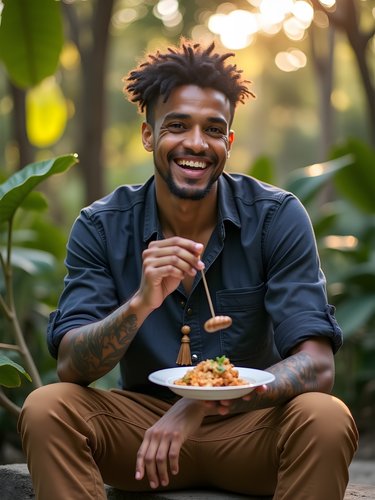

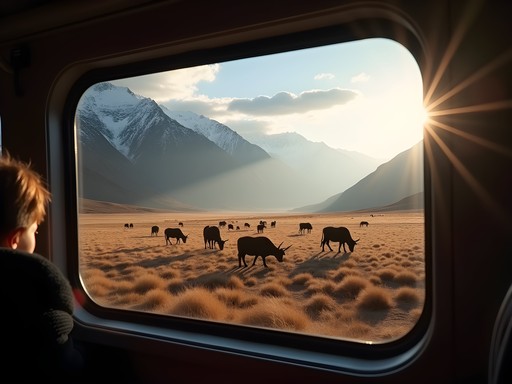

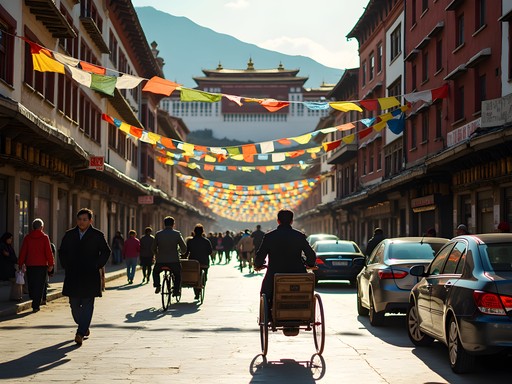
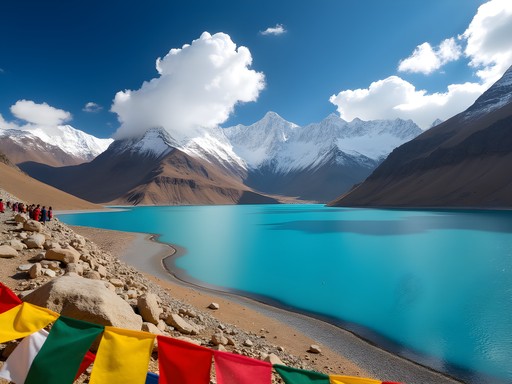










Comments
tripway
Planning to visit next month! How's the internet situation in Lhasa? Need to stay connected for work emergencies.
wildwanderer
Not the author but was there recently - internet is spotty and heavily restricted. VPNs sometimes work but are unreliable. Most major hotels have decent WiFi but don't count on using Google services or social media. I'd arrange an international roaming plan as backup.
tripway
Thanks for the heads up! Will definitely sort out alternatives then.
nomadic_soul
That opening photo of the Potala Palace is stunning! Did you use a drone?
Corey Kelly
Thanks! No drone (they're restricted in Tibet) - just lucky timing from a viewpoint near the Chakpori Hill during golden hour.
Adam Nichols
Excellent breakdown of the transportation options, Corey. Having visited Tibet three times now, I'd emphasize your point about altitude acclimation. The train approach is scientifically superior for minimizing altitude sickness. My first visit I flew directly to Lhasa and spent two days with a splitting headache despite medication. On subsequent trips, I took the train from Xining and had virtually no symptoms. One thing I'd add: the bus network within Lhasa has improved dramatically in the last year, with digital payment options and English announcements on major routes. Makes exploring the outskirts much more accessible for independent travelers (within permit restrictions, of course).
Corey Kelly
Thanks for that update on Lhasa's bus system, Adam! Great to hear about those improvements. I'll need to check that out on my next visit.
bluephotographer
That shot of the Potala Palace in your header is absolutely stunning! What time of day did you take it? The light is perfect.
wildwanderer
I took the train from Xining last year and it was INCREDIBLE! The oxygen-supplemented cars really helped with the altitude, and watching the landscape transform through those huge windows was like nothing else. Took your advice about spending a night in Xining first - game changer for acclimatization. One tip: bring extra snacks for the train journey. The dining car was decent but expensive and got crowded quickly.
bluephotographer
Did you feel the train was comfortable enough to sleep on? Debating between flying or taking the train for my trip.
wildwanderer
The soft sleeper was surprisingly comfortable! Definitely worth the extra cost over hard sleeper. I used my travel pillow and slept pretty well. The gentle rocking actually helped!
greengal
Great guide! How far in advance did you have to arrange the Tibet permits? I've heard it takes weeks and I'm trying to plan for next spring.
Corey Kelly
Thanks for asking! I'd recommend starting the permit process at least 3-4 weeks before your trip. The timeline can vary depending on the political situation, so working with a reliable Tibet travel agency is crucial. Spring is beautiful there, but book early as it's getting popular!
greengal
Thanks so much! Will start planning early then.
Gregory Boyd
Excellent guide, Corey! Having been to Lhasa four times now, I'd add that the altitude medication Diamox can be helpful but isn't a magic bullet. Start taking it 24 hours before ascent and stay on it for 2-3 days in Lhasa. Local transportation tip: while the article covers buses well, I found using DiDi (Chinese Uber) incredibly convenient in Lhasa, though you'll need a Chinese payment method. Also, I always carry my pulse oximeter to monitor oxygen levels at high altitude - absolute lifesaver for knowing when to take it easy.
freemaster
Thanks for the DiDi tip! Is English available in the app there?
Gregory Boyd
There's limited English support, but having your hotel address saved in Chinese characters helps enormously. Screenshot your destinations in Chinese before heading out!
tibet_dreamer
Just got back from Lhasa last month and can confirm everything in this guide is accurate as of October 2025. We took the train from Chengdu which was an adventure in itself! The oxygen-enriched cars were a lifesaver as we climbed to the plateau. One thing to add - the security checks at the train stations are INTENSE. Leave plenty of extra time and be prepared to have all your bags thoroughly inspected. For getting around Lhasa, we mostly walked and used taxis. Found that showing drivers the destination on maps (screenshots taken when we had WiFi) worked better than trying to pronounce names. The public buses are super cheap but we found them confusing without speaking Tibetan or Chinese.
backpackmate
That Potala Palace photo is stunning! Can't wait to see it in person someday.
coolchamp
Took the train from Xining last year and it was INCREDIBLE! The oxygen situation is real though - they pump it into the carriages as you climb higher. The views through Tanggula Pass were mind-blowing. Definitely take motion sickness pills if you're prone to it, and bring plenty of snacks. The dining car food was just okay. Took me about 2 full days in Lhasa before I felt normal with the altitude. Great tip about the gradual ascent strategy - wish I'd known that before!
backpackmate
Did you need a separate permit for the train? Or is it covered by the Tibet Travel Permit?
coolchamp
It's all covered by the Tibet Travel Permit, but you need to book the train tickets separately. They sell out fast during peak season!
Venture X
Premium card with 2X miles, $300 travel credit, Priority Pass